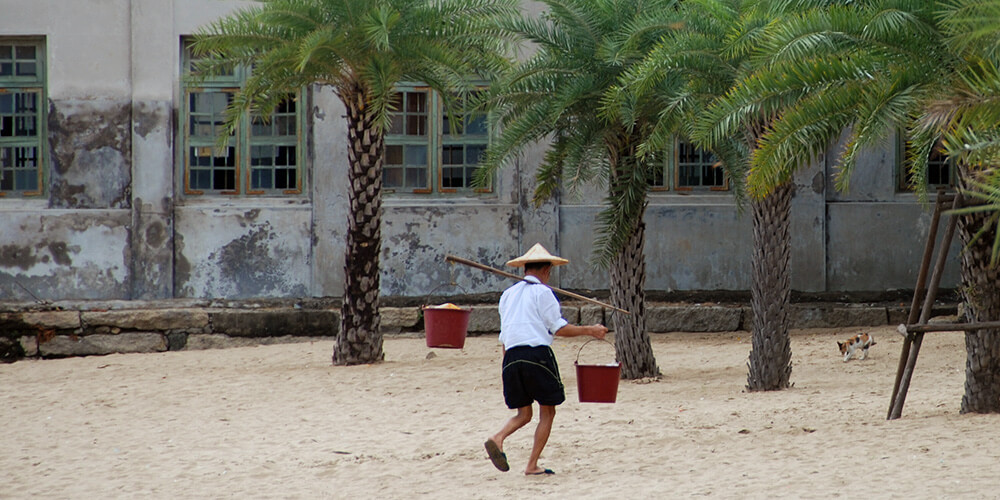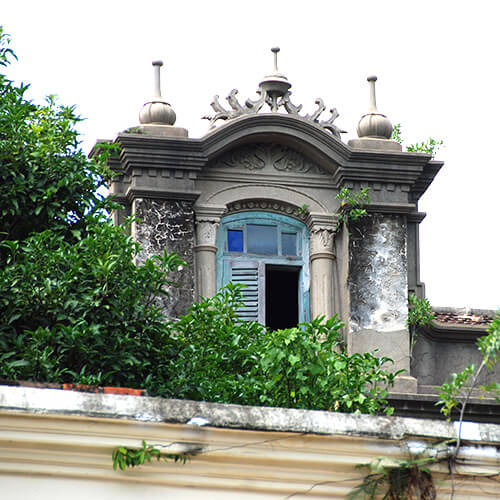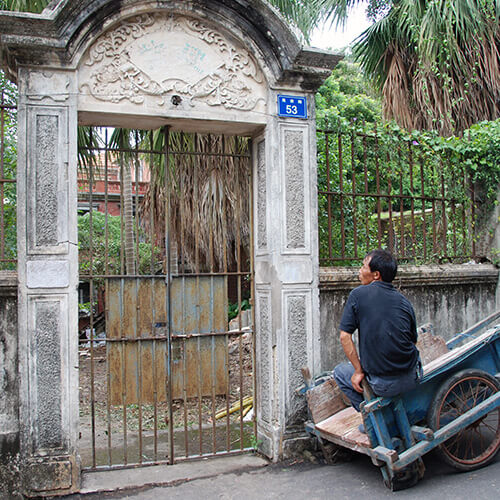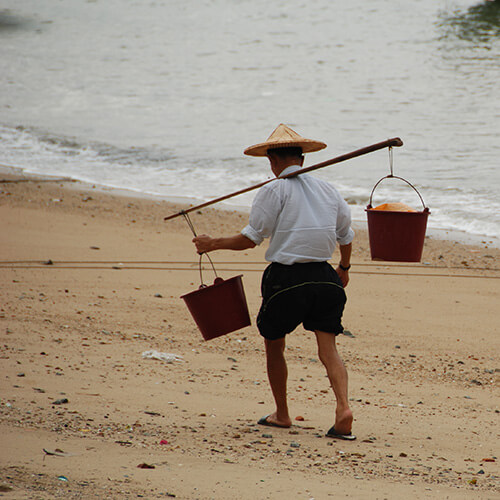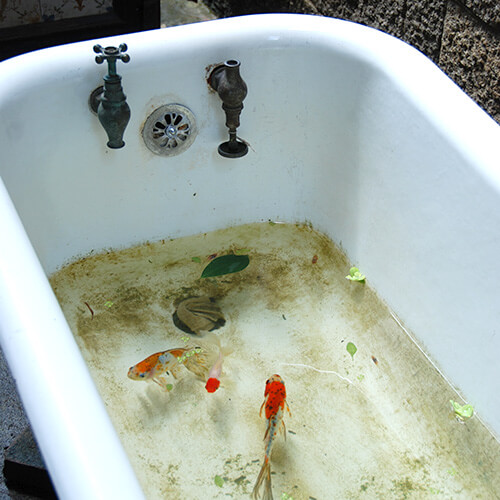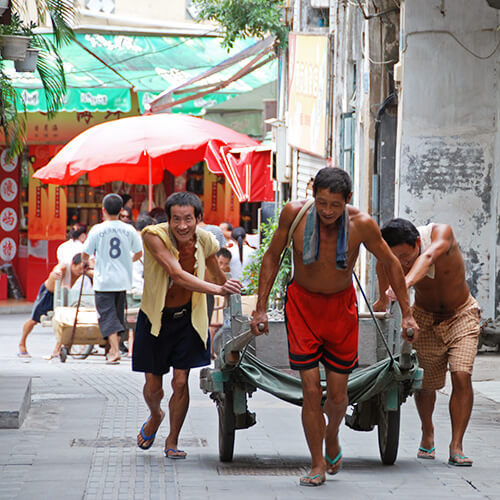This post may contain Amazon Affiliate links for which I may receive compensation.
Spending the day walking around Gulang Yu was such a treat last Sunday!
Gulang Yu: “the wave that sounds like the beating drum” (gu for drum and lang for wave) – what a nice name!
Gulang Yu is a small island just a 5-minute ferry ride from the island of Xiamen.
We wandered all day and we felt like we were back in time at the beginning of the 20th century, but in a place where inhabitants were long gone and had deserted their gorgeous colonial residences.
Indeed a lot of the homes are empty, falling into ruin and covered in ivy, with overgrown gardens of tropical flower bushes.
But despite the decay and the abandonment, it is said to be the largest and best-preserved collection of colonial mansions in mainland China.
It is difficult to explain the island’s reality and its architecture, though, without going back to just a little bit of history.
From the 16th century to the 19th century, starting with the Portuguese and then the British, the Dutch, and the French, Europeans tried unsuccessfully to open trade with China.
But the Chinese emperors, who considered every other country as its vassal, were a lot less interested in opening its country to trade than the British were interested in its products, such as its tea.
So China has resisted for several centuries, forbidding access to its ports, its rivers, and its lands and trying to limit the trade to the port of Canton.
The British continued to trade illegally, though, having found a product of desire brought from its Indian colony: opium.
As the trade of opium increased rapidly, the emperor of China understood the dangers of its addiction and forbade its trade. It also tried to punish illegal trade by destroying boatloads of opium it would catch.
However, a century of humiliation started for China in the middle of the 19th century. Humiliation is a word that often comes back in books about that period.
China lost two opium wars against the Europeans – British and French – and had to pay heavy fines to reimburse the destroyed shipments and open its ports to trade and missionaries.
Amoy (today’s Xiamen), along with Beijing and Shanghai, was one of these ports, which saw the Europeans’ arrival. Amoy officially became a foreign concession in 1903. You can read an interesting book for more on the subject: The dynasties of China, by Bamber Gascoigne. I grabbed it last year at Shanghai airport!
Today, more than in other former “treaty ports,” even Shanghai, Xiamen has kept the signs of its colonial era. It has many nice colonial buildings on its coastal streets and is known to have the largest and best-preserved collection of colonial-era shop-houses in mainland China.
But Gulang Yu has a very special place in the history of the trading port. Most of the foreigners lived on the small island rather than in Xiamen itself.
And by the 1930s, the island counted about 500 resident foreigners and more than 10 consulates. No surprise! The island looks like a tropical paradise, with its hills and its coastlines. It has a nice breeze which I am sure is precious during the tropical summer months.
Today, there are many tourist shops, some nice beaches, many gardens to visit, and many nice narrow streets where you can venture and discover this colonial heritage.
We even visited a museum which was not on the list of tourist places to see on the island, with tons of relics, oil lamps, books, clocks and furniture. The feeling was strange. It was just an accumulation of objects on tables as if people had taken everything from the many houses and just dropped them here. Two goldfishes were swimming in a bathtub outdoors… a child’s wooden toy was in the middle of the courtyard. The signs explaining the history let the visitor know in broken English (and in mandarin, of course) that the local people were not happy that the foreigners had taken over the island, and it was time that the island went back to what it used to be.
And there is a lot more to see: sculptures in the gardens, a piano museum with over 100 pianos from the 19th century, piano concerts, not to mention the school of Arts and Design, which brings lots of artists.
We will have to come back!

